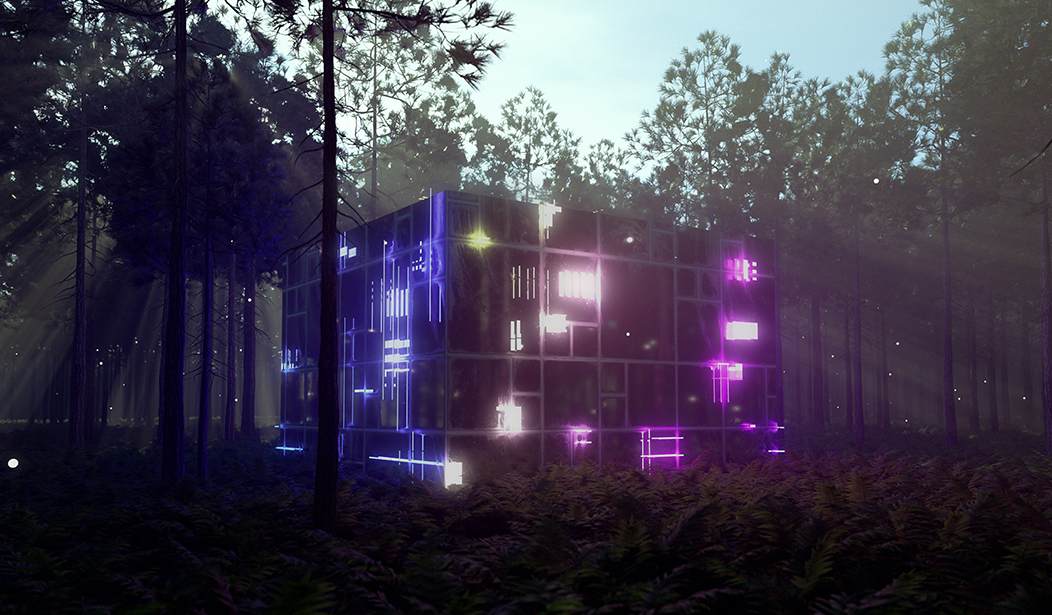We solve today's problems with tomorrow's technology.
Now, 3-D printing may not be exactly tomorrow's technology; 3-D printers have been around for a while and have steadily improved in capability and versatility, being used to produce everything from toys to firearms. But now, out of Maine, has arisen a 3-D printer design that can print houses — and, if it works as advertised, it may make a lot of people across the political spectrum satisfied with how it all works.
Why? The company producing this machine claims that it can print affordable houses out of largely biologically-based, recyclable materials at lower cost and with lower carbon emissions than traditional housing. That, if true, could be a win-win.
The machine, called the Factory Of The Future 1.0, has been built on the campus at the University of Maine and combines artificial intelligence with robotics operations and high-performance computing.
Government officials said the printer exceeded their expectations and "stands as a beacon of innovation" - while US senator for Maine, Susan Collins, said it was a "great day for our university, our state, and our nation".
The campus is also home to the 2019 Guinness World Record for the largest polymer 3D printer, which can also create homes - but the new machine is said to be four times bigger.
The university wants to show how homes can be constructed nearly entirely by a printer with a lower carbon footprint.
There are some catches, of course — and some questions.
It (the university) said it allows them to escalate 3D-printed home technology using bio-based materials to eventually print neighbourhoods of affordable housing to address homelessness in the region.
If buildings are not suitable, they can be recycled, officials added.
It would be interesting to know what the "bio-based materials" are. My house, here in the Alaska woods, is made mostly from "bio-based materials," namely, wood. Most houses in the United States use wood as the primary construction material. Presumably, this 3D printer will use something plant-derived; cellulose would seem to be a logical choice, although the University of Maine isn't offering those specifics. But from what information is provided, it's logical that, once the tech has all the kinks worked out, a 3-D printed house may be cheaper than a traditional one, and certainly would require a smaller crew to build.
But, as always, where new technologies come in, there are some stumbling blocks.
See Related: MUST WATCH: Climate Activists Find Out It's Not a Good Idea to Try to Rush the Stage at Murkowski Event
New York Cancels Three Major Offshore Wind Projects, Joe Biden Hardest Hit
First, you can't just park the machine on a plot of land, hit the button, and "whhrrrrr," a house appears. Before any such process can happen, there are other infrastructure issues; if it's a new development, roads have to be built, and electrical and sewer connections are brought in. Before a house can be printed, there has to be a foundation built, and those are normally concrete or cinder blocks. After the house is printed, it still needs plumbing, heating, and electrical wiring installed the old-fashioned way: by skilled tradesmen.
Of course, those things have to be done no matter how the house is built.
I'm not overly worried about the "emissions" aspect of this. I think that's mostly hooraw. But this could nevertheless be an interesting innovation — if it works. If, in the end, sans any stupid government subsidies or other briberies, houses of decent quality can be produced at a lower price, then the market will jump on this and people will put money into it. And if it produces more affordable housing, if it really does use less energy to produce, then for once, we may just see an innovation that will make people across the political spectrum happy. That's not something that happens every day.
We solve today's problems with tomorrow's technology. Many places in the United States, like, say, West Hollywood, need affordable housing. This may be a problem new technology can solve — if it doesn't run afoul of leftist NIMBYism, of course.














